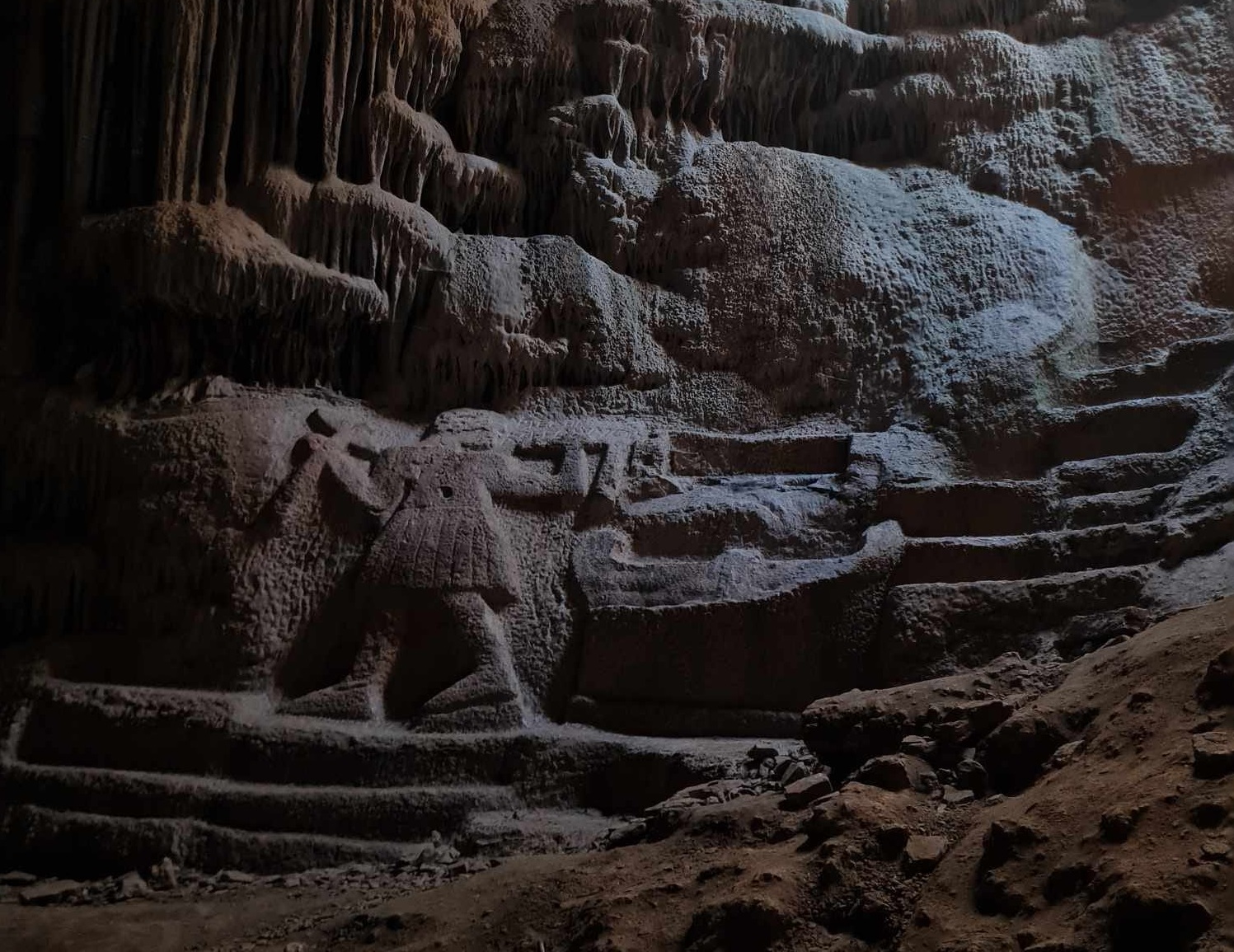Vari Cave is a small cave system in the Hymettus mountain range, located in the Athens area of Attica, East Central Greece.
The cave is referred to by various names throughout history, such as the Nympholyptos Cave and the Cave of Pan, but it is most commonly known today as Vari Cave, named after its proximity to the suburb of Vari.
The cave was formed through a natural geological process known as karstification. This process occurs when slightly acidic rainwater seeps into the ground and reacts with the limestone rock, gradually dissolving it over thousands or even millions of years to form a cavity.
According to tradition, a sanctuary dedicated to the Nymphs was built within the cave by Archedemus of Thera, a stonemason and sculptor who lived in the 6th to 5th century BC.
Archedemus identified himself as a “nympholept,” meaning he was a follower believed to be possessed or inspired by the Nymphs, minor female nature deities in Ancient Greek mythology that inhabited springs, rivers, and caves.

From the cave entrance, stone steps descend into two separate chambers. The first chamber contains a rock-carved shrine with a temple-like façade dedicated to Pan, the half-goat, half-human god known for his playful nature.
The second chamber houses a rock-cut shrine devoted to Apollo Hersus, alongside a simple depiction of Archedemus of Thera holding his stone-working tools.
The cave was abandoned during the mid-2nd century BC, however, coins found in situ suggest that the sanctuary was reoccupied during the Roman period around the reign of Constantine the Great (AD 307–337).
Based on a study of coin chronology excavated from the cave silt, the cave remained a popular attraction for the Romans up until the 5th to 6th century AD.
Some scholars suggest that around this time the cave was converted into a Christian site, however, more recent studies now indicate that the cave was used for secret pagan worship following the edicts that abolished all pagan cults and ceremonies throughout the Roman Empire.
Header Image Credit : Mia Delić





